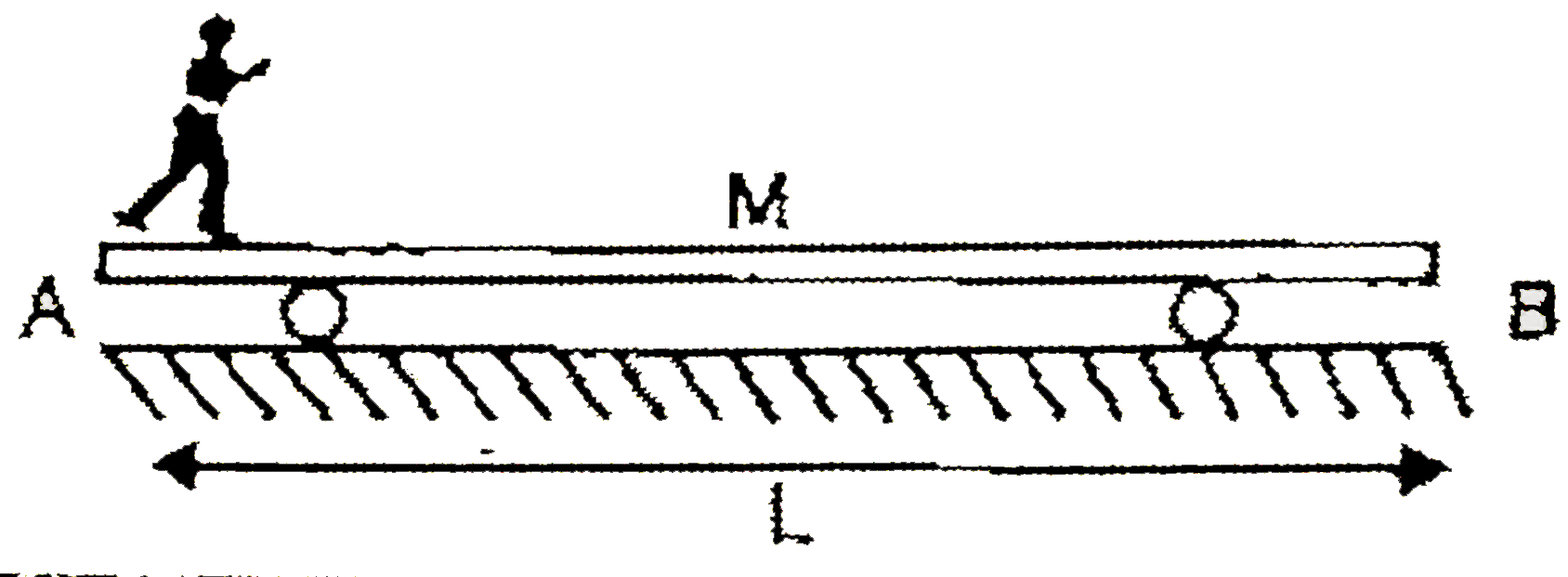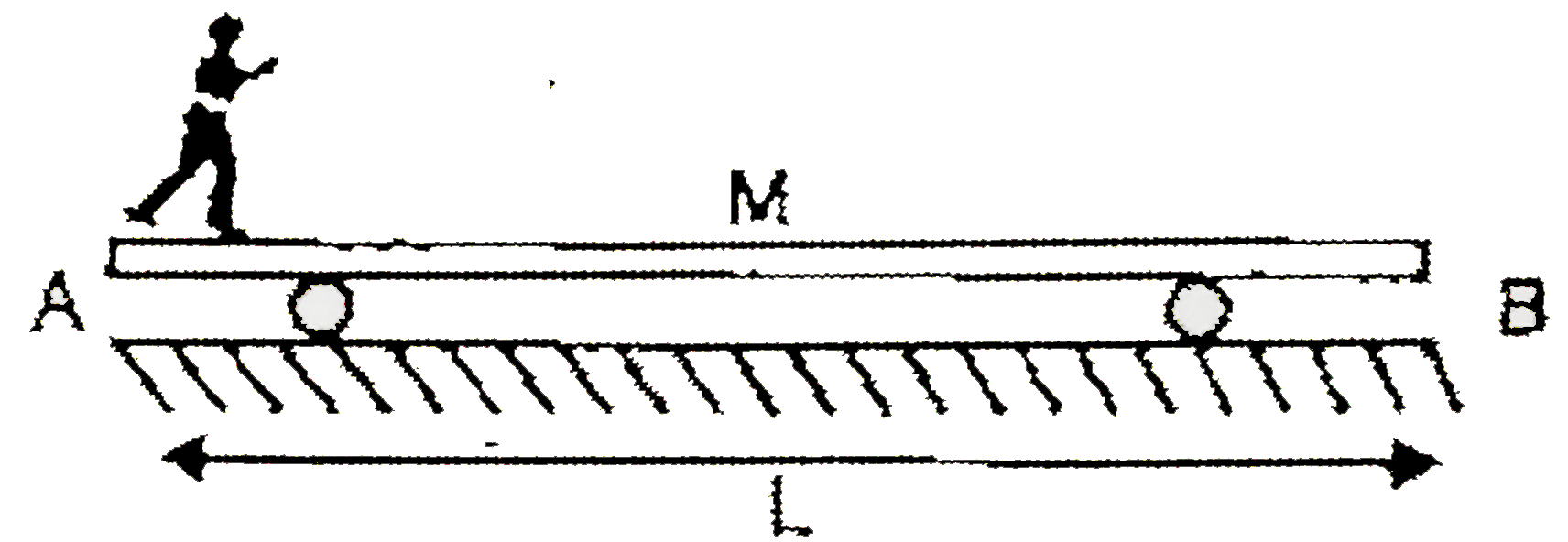A child is standing at one end of a long trolley moving with a speed v on a smooth horizontal track. If the child starts running towards the other end of the trolley with a speed u, the centre of mass of the system (trolley + child) will move with a speed :
zero
(v +u)
(v - u)
v
The correct Answer is:D
Step by step video, text & image solution for A child is standing at one end of a long trolley moving with a speed v on a smooth horizontal track. If the child starts running towards the other end of the trolley with a speed u, the centre of mass of the system (trolley + child) will move with a speed : by Physics experts to help you in doubts & scoring excellent marks in Class 12 exams.
Updated on:21/07/2023Topper's Solved these Questions
Similar Questions
A child is sitting at one end of a long trolley moving with a uniform speed v on a smooth horizontal track. If the child starts running towards the other end of the trolley with a speed u (w.r.t. trolley), the speed of the centre of mass of the system will.
View SolutionThe figure shows a man of mass m standing at the end A of a trolley of maas M placed at rest on a smooth horizontal surface. The man starts moving towards the end B with a velocity urel with respect to the trolley. The length of the trolley is L.

When the man reaches the end B, the distance moves . by the trolley with respect to ground is:
View Solution
Knowledge Check
A child is sitting at one end of a long trolley moving with a uniform speed v on a smooth horizontal track. If the child starts running towards the other end of the trolley with a speed u (w.r.t. trolley), the speed of the centre of mass of the system will.
Au+vBv - uCvDnone
The figure shows a man of mass m standing at the end A of a trolley of maas M placed at rest on a smooth horizontal surface. The man starts moving towards the end B with a velocity urel with respect to the trolley. The length of the trolley is L.

The velocity of the man with respect to ground v1 will be:
View SolutionA man of mass m is standing at one end of a trolley of mass M and length L placed at rest on a smooth horizontal surface. The man starts moving towards the other end and covers distance L, then distance moved by man w.r.t ground is
View SolutionThe figure shows a man of mass m standing at the end A of a trolley of maas M placed at rest on a smooth horizontal surface. The man starts moving towards the end B with a velocity urel with respect to the trolley. The length of the trolley is L.

As the man walks on the trolley, the centre of mass of the system (man+ trolley) :
View SolutionThe figure shows a man of mass m standing at the end A of a trolley of maas M placed at rest on a smooth horizontal surface. The man starts moving towards the end B with a velocity urel with respect to the trolley. The length of the trolley is L.

The time taken by the man to reach the other end is:
View SolutionThe figure shows a man of mass m standing at the end A of a trolley of maas M placed at rest on a smooth horizontal surface. The man starts moving towards the end B with a velocity urel with respect to the trolley. The length of the trolley is L.

Choose the correct statement:
View SolutionThe figure shows a man of mass m standing at the end A of a trolley of maas M placed at rest on a smooth horizontal surface. The man starts moving towards the end B with a velocity urel with respect to the trolley. The length of the trolley is L.

When the man starts moving, then the velocity of the trolley v2 with respect to ground will be:
View SolutionThis figure shows a man of mass m standing at the end A to a trolley of mass M placed at rest on a smooth horizontal surface. The man starts moving towards the end B with a velocity urel with respect to the trolley. The length of the trolley is L.

(a) Find the time taken by the man to reach the other end.
(b) As the man walk on the trolley, find the velocity centre of mass of the system (man+trolley).
(c) When the man reaches the end B, find the distance moves by the trolley with respect to ground.
(d) Find the distance moved by the man with respect to ground.
View Solution
